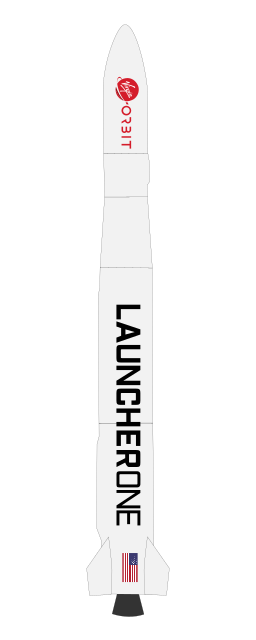 W
WAir launch to orbit is the method of launching rockets at altitude from a conventional horizontal-takeoff aircraft, to carry satellites to low Earth orbit. It is a follow-on development of air launches of experimental aircraft that began in the late 1940s. This method, when employed for orbital payload insertion, presents significant advantages over conventional vertical rocket launches, particularly because of the reduced mass, thrust and cost of the rocket.
 W
W17K-AM was the name of a two-stage-to-orbit russian orbital launch vehicle projected in 1993, proposed by the Russian Air Force and to be constructed by Chelomey. It didn't pass the phase of study. The vehicle was to be composed by a Horizontal takeoff, horizontal landing launch stage with a spaceplane mounted on it that would reach orbit.
 W
WAldebaran is a proposed air-launched microsatellite launch vehicle testbed studied by CDTI, CNES and DLR for a future launcher capable of lifting up to 300 kilograms (660 lb) into Low Earth Orbit.
 W
WHaas is a family of rocket space launchers developed by ARCAspace for the Google Lunar X Prize competition and for their national manned space program. As of 2020 no rocket has been launched, the planned rocket types changed significantly over time.
 W
WLauncherOne is a two-stage orbital launch vehicle developed and flown by Virgin Orbit that began operational flights in 2021, after being in development from 2007 to 2020. It is an air-launched rocket, designed to carry smallsat payloads of up to 300 kg (660 lb) into Sun-synchronous orbit (SSO), following air launch from a carrier aircraft at high altitude. The rocket is carried to the upper atmosphere on a modified Boeing 747-400, named Cosmic Girl, and released over the Pacific Ocean. Initial work on the program was done by Virgin Galactic, another Virgin Group subsidiary, before a separate entity— Virgin Orbit—was formed in 2017 to complete development and operate the launch service provider business as a separate entity from the passenger-carrying Virgin Galactic business.
 W
WThe NOTS-EV-1 Pilot, better known as NOTSNIK was an expendable launch system and anti-satellite weapon developed by the United States Navy's United States Naval Ordnance Test Station (NOTS). NOTSNIK began as an in-house project using available NOTS funds. The Advanced Research Projects Agency later supplied some funds for the program. The program involved creating transistorized sensors to detect nuclear explosions from the Operation Argus tests. Ten were launched during July and August 1958, all of which failed. It was the first air-launched rocket to be used for an orbital launch attempt; however, none was recorded as having reached orbit. Following the third orbital launch attempt a NOTS engineer at the tracking station in Christchurch, New Zealand reported receiving a weak signal from the spacecraft; This was never confirmed, and the launches were not catalogued as having reached orbit. The Pilot rocket was part of Project Pilot.
 W
WThe NOTS-EV-2 Caleb, also known as NOTS-500, Hi-Hoe and SIP was an expendable launch system, which was later used as a sounding rocket and prototype anti-satellite weapon. It was developed by the United States Navy's Naval Ordnance Test Station (NOTS) as a follow-up to the NOTS-EV-1 Pilot, which had been abandoned following ten launches officially classified as failed missions. Two were launched in July and October 1960, before the cancellation of the project. Following cancellation, two leftover Calebs were used in the Satellite Interceptor Program (SIP), while three more were used as sounding rockets, under the designation Hi-Hoe. These derivatives flew until July 1962, when the Hi-Hoe made its final flight.
 W
WA spaceplane is a vehicle that can fly/glide like an aircraft in Earth's atmosphere and maneuver like a spacecraft in outer space. To do so, spaceplanes must incorporate features of both aircraft and spacecraft. Orbital spaceplanes tend to be more similar to conventional spacecraft, while sub-orbital spaceplanes tend to be more similar to fixed-wing aircraft. All spaceplanes to date have been rocket-powered but then landed as unpowered gliders.
 W
WStratolaunch LLC is an American aerospace company providing high-speed flight test services. It was originally formed in 2011 to develop a new air-launched space transportation system, with its corporate headquarters located in Seattle, Washington. The company and development project were officially announced in December 2011 by Microsoft co-founder Paul Allen and Scaled Composites founder Burt Rutan, who had previously collaborated on the creation of SpaceShipOne.
 W
WTowed glider air-launch system is a NASA-designed two-stage air-launched reusable launch system currently in development at NASA's Armstrong Flight Research Center. The system uses a glider, tow plane, and rocket and is designed to carry small satellites to orbit. Both the glider and tow plane are reusable.